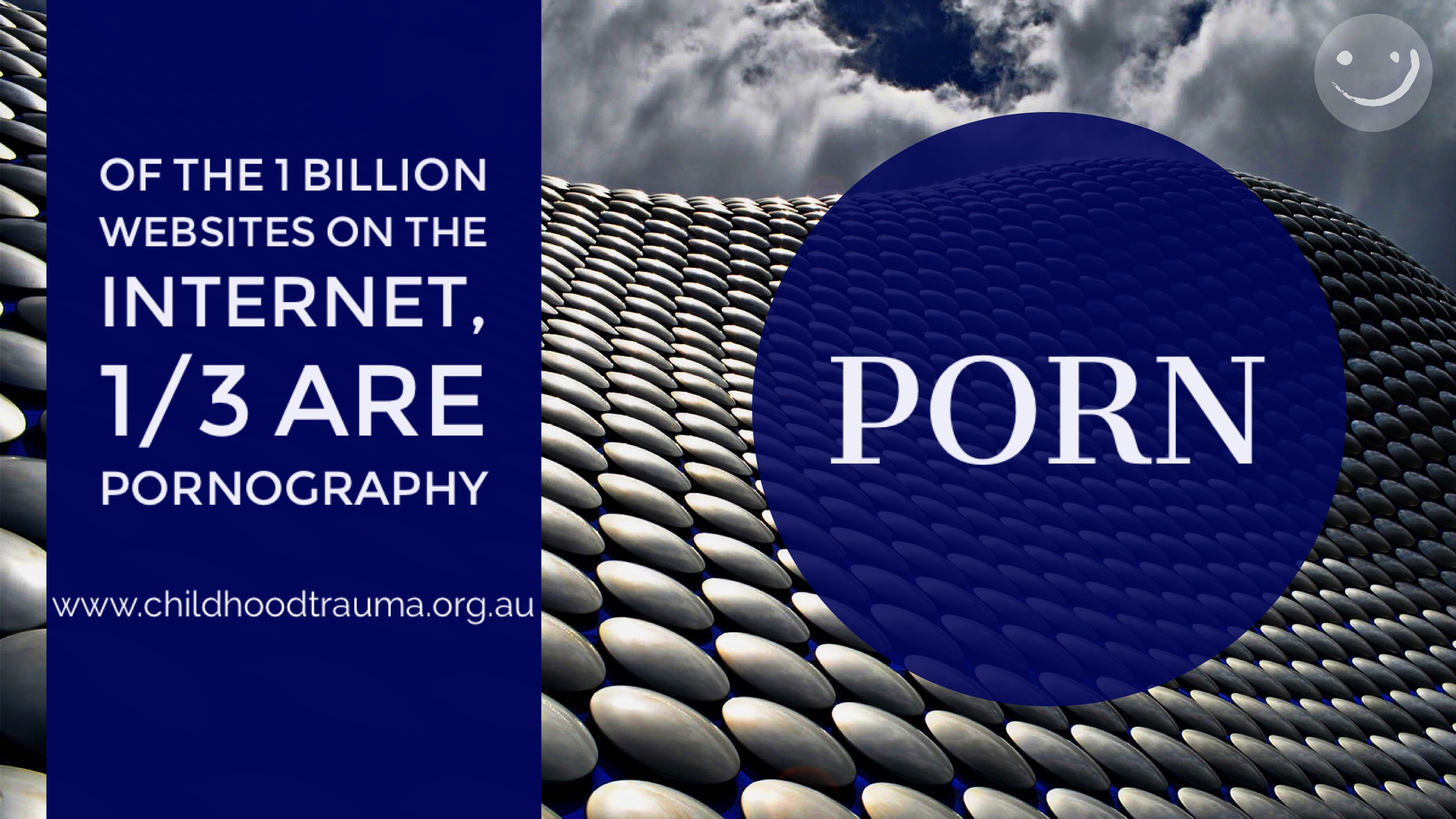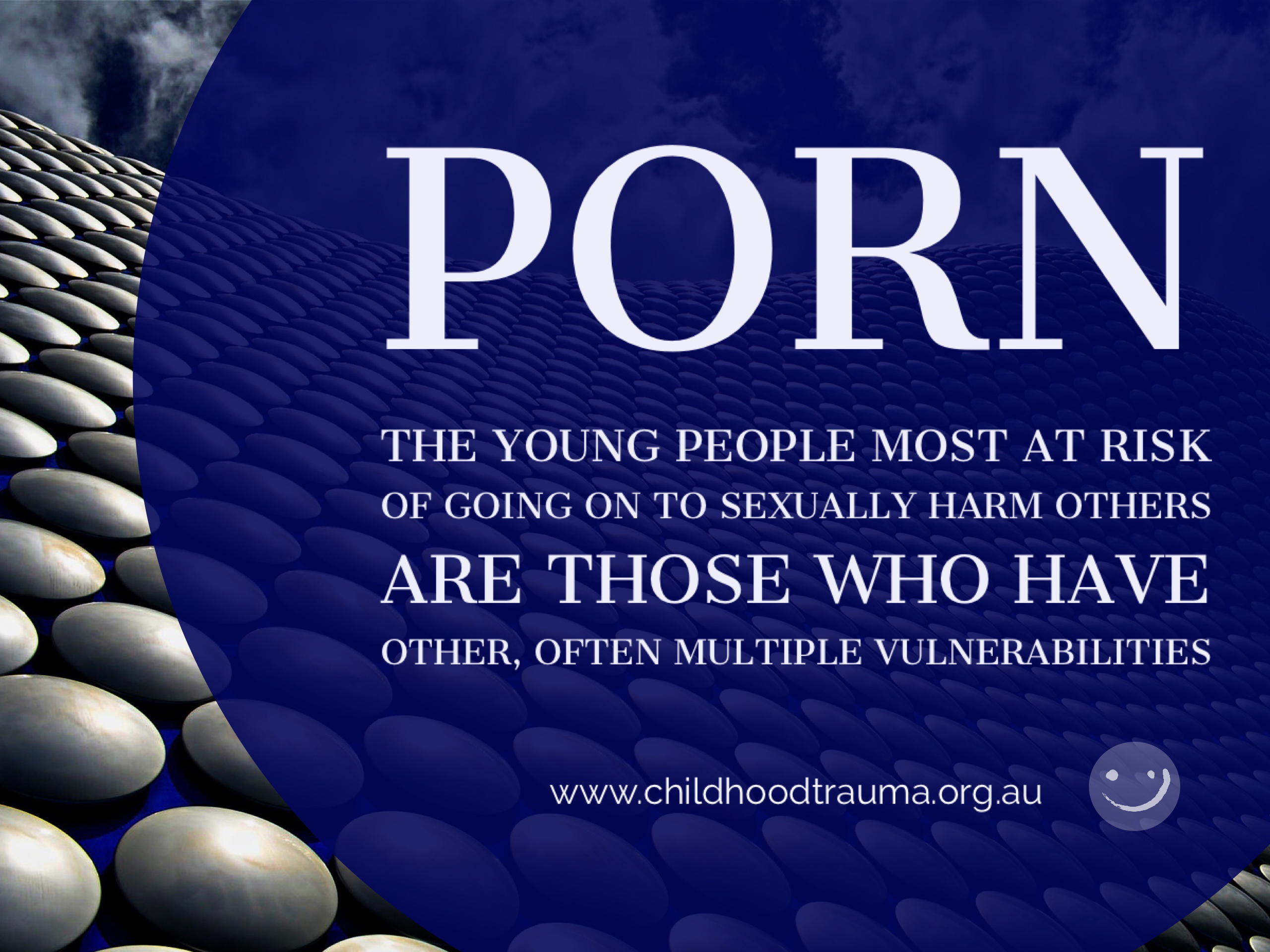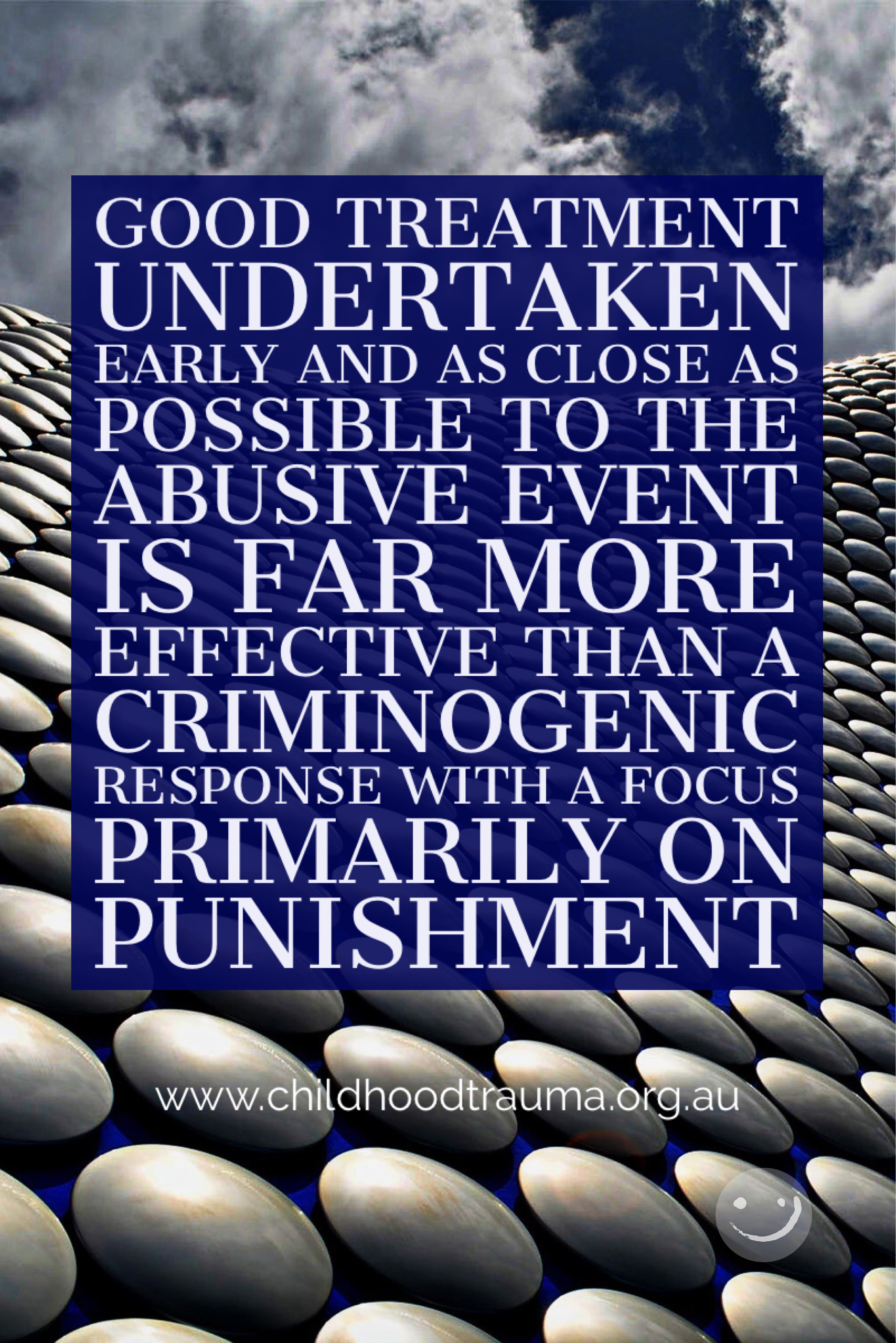
Youth and Porn – Sensational to Developmental

This article was co-authored by Russell Pratt, DPsych, MAPS, ATSAF, and Cyra Fernandes, Team Leader, Child and Family Counselling Program, Child Trauma Service Victoria, at the Australian Childhood Foundation.
For those of you who have been living under a very large rock, on a remote island, and of course with no internet access, we are going to let you in on a little secret; porn is everywhere – at least on the Internet. And people, many people, including young children are seeing it. What impact(s) – if any – are we seeing and what do we need to do?
 First, let’s put out there front and centre what we know. We know that of the approximate one-billion websites available on the internet, one third are pornography sites; we know that two-thirds of people with access to the web view porn. We know that when we asked the question about children and young people aged over twelve years of age viewing porn, we found that we are at saturation point – in other words, they’ve all seen it.
First, let’s put out there front and centre what we know. We know that of the approximate one-billion websites available on the internet, one third are pornography sites; we know that two-thirds of people with access to the web view porn. We know that when we asked the question about children and young people aged over twelve years of age viewing porn, we found that we are at saturation point – in other words, they’ve all seen it.
On top of all this, we know that porn influences sexual practices. The lack of genital pubic hair on most under-40’s is the signature look of porn, as are numerous other acts. Let’s see if you know these terms and if you do, thank porn; MILF (Mothers I’d like to f…), DP (double penetration), AtM (ass to mouth) and others. In a recent Latrobe University health survey of secondary school students, nearly ten percent of the sample of 15-17 year olds reported having engaged in anal sex. It seems that young men are the main consumers of online pornography, with youth aged 12-17 the most frequent of all (Haggstrom-Nordin, Hanson & Tyden, 2005). We also know that gay young men report gay porn as their only access to sex education.
What are the impacts of pornography consumption on children? Are there any group differences in terms of relational and sexual practices dependent on age of first (and ongoing?) viewing? Well, yes is the short answer. In her 2007 thesis, Canadian researcher Bente Skau found differences in sexual practices within her sample of 470 (average age 19 years), dependent on viewing porn under the age of 10 years compared to youth who viewed porn for the first time over the age of 10. Disturbingly, early onset viewers engaged in more sexually questionable acts, reported a desire to engage in more varied sexual behaviours, were more sexually aroused by violence, consumed more pornography later in life, and spent more time per week looking at pornography. Not a pretty picture is it? As well, Skau reported that the average age of first viewing for her sample was 12.2 years of age.
 A lot has also been written recently regarding pornography providing a template for very young children to commit acts of sexually abusive behaviour – guilty as charged ourselves. Whilst the research about very young children viewing pornography is troubling, it does not follow that all children and young people who view pornography on the internet will go on to sexually harm others. It is more complex than that. Clearly the young people most at risk are those who have other, multiple vulnerabilities such as difficulties in self-regulation, social problems and an unsupportive care environment (Owens et. al., 2013).
A lot has also been written recently regarding pornography providing a template for very young children to commit acts of sexually abusive behaviour – guilty as charged ourselves. Whilst the research about very young children viewing pornography is troubling, it does not follow that all children and young people who view pornography on the internet will go on to sexually harm others. It is more complex than that. Clearly the young people most at risk are those who have other, multiple vulnerabilities such as difficulties in self-regulation, social problems and an unsupportive care environment (Owens et. al., 2013).
We have been writing and presenting about the impact of pornography on young people who sexually harm for several years now. In our most recent survey we asked therapists who worked with sexually abusive youth about their views on the impact of pornography on their child and adolescent clients. We received well over 200 valid responses from around the world. The views expressed were telling – particularly concerning age of first viewing. The majority of children in treatment were believed to have commenced viewing pornography under the age of ten years. As well, respondent therapists told us that they were seeing more extreme sexual acts in a much quicker time, and being undertaken by much younger children. This reinforced our earlier point; some young children who are exposed to porn are using it a as template for sexual activity. They are re-enacting what they see on screen.
We have spent the past twenty years working with youth who sexually harm. Those – mainly boys – who would have previously been referred to as juvenile sexual offenders, as well as really young kids who we now refer to as exhibiting problem sexual behaviours. We can unequivocally state that the greatest leap forward in our work over that time was the shift from a criminogenic, top-down adult type model of sexual offending that viewed really young kids as simply miniatures of adult offenders, displaying all the traits and tenets of the adult sex offenders they would invariably become, to a model that is based on child developmental principles, that observes, knows and understands that children and youth who engage in these types of behaviours rarely go on to do them again, whether treated or untreated (but treatment does halve recidivism).
Don’t get us wrong – any one sexual abuse event, carried out by a child or by an adolescent, is serious and results in someone being victimised – and that is simply unacceptable. As such we hold all children and adolescents who engage in problem or sexually abusive behaviour to account, and we treat them therapeutically. In Victoria, we even have Therapeutic Treatment legislation in our Children, Youth and Families act to ensure free, voluntary (and if not voluntary then it becomes ordered and mandatory) treatment for youth up to just shy of the age of 15 years, with coming legislation to extend this up to  17 year olds. This legislation is based on the notion that good treatment undertaken early and as close as possible to the abusive event is far more effective than a criminogenic response with a focus primarily on punishment.
17 year olds. This legislation is based on the notion that good treatment undertaken early and as close as possible to the abusive event is far more effective than a criminogenic response with a focus primarily on punishment.
So where does this fit in with the exposure of our children to porn? Melinda Tankard Reist’s recent blog article quoted the late Professor Freda Briggs submission to the 2016 Senate inquiry into harm to children accessing pornography. I believe that the eminent Professor, a rightly well regarded pioneer of work with sexually abusive youth, was in no doubt in her mind, that her purposefully forceful language was a necessary part of engaging the public who may want to turn away from a problem that is so confronting as young people’s exposure to pornography. All of us, including Professor Briggs, Maree Crabbe, David Corlett and Melinda Tankard-Rice have the same purpose; to alert the Australian community to how widespread pornography has become, especially for young people.
However, sensational statements labelling children as sexual predators concern us, taking us back ten years to the fabled Herald-Sun headline “Four year old boy – a sex fiend”. Language is powerful, and by describing children in this way, we situate the problem with the child, and distance ourselves from the reality that the environment children are raised in always has, and always will shape them. As such, these descriptors are not helpful. They take us way from the common sense issues of parenting. Like most of these issues, we need to firstly deal with the basic issues – early intervention regarding better parenting practices, better supervision and of course – zero tolerance for pornography for at least the under-12’s.
Good web etiquette, teaching young people to be savvy consumers, and letting all teenagers know that porn doesn’t actually resemble real sex or relationships are important strategies that should have universal support. Contemporary sex education is also essential. We should not label these children with adult centric terms such as ‘perpetrator’ and ‘sex offender’. Effective intervention will require better engagement in the public debates on pornography by those of us who work in this area – we simply need to be better at this. Let’s widen the collective understanding that these are children and young people and they require our support and our understanding as part of a sensitive and thoughtful intervention to assist them back onto a positive developmental path.
